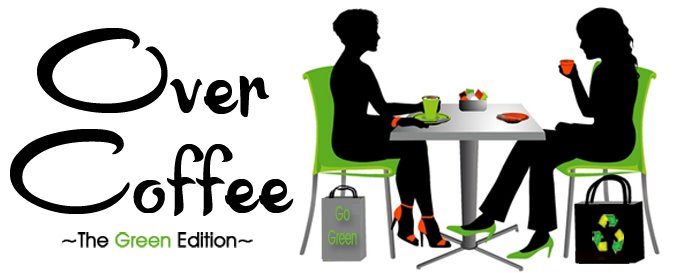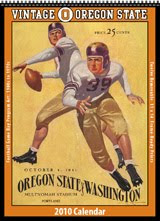Decoding Meat + Dairy Product Labels - 2011 Meat Eaters Guide | Meat Eater's Guide to Climate Change + Health | Environmental Working Group
Cage-free
The term refers to hens that are not raised in cages, but it does not necessarily mean they have access to the outdoors. There is no standard definition of “cage-free,” but it generally implies that the birds are free to perform natural behaviors. Many cage-free claims are not certified, though some cage-free eggs are certified by American Humane Certified label.
Certified Humane:
Products carrying this label are certified to come from animals that were never confined in cages or crates, were not subjected to de-beaking (in the case of poultry) and were slaughtered according to specific requirements designed to minimize suffering. It does not permit the use of sub-therapeutic antibiotics or hormones. “Certified Humane Raised and Handled” and “Animal Welfare Approved” are the two leading humane certification systems, although the Food Alliance follows similar standards. “Certified Humane” does not mean animals had access to pasture, but “Animal Welfare Approved” does.
Farmed Fish
This refers to the rapidly growing industry that raises and feeds fish for human consumption in tanks or large wire pens anchored in coastal areas or other large bodies of water. Also called aquaculture, fish farming is expanding to offset the global decline in the wild fish catch. Fifty percent of seafood sold in the U.S. is now farmed. Ironically, feeding carnivorous farmed fish such as salmon requires harvesting millions of tons of smaller wild fish, such as anchovies and sardines, to produce fishmeal and fish oil. Catfish and other farmed fish are fed mostly soybeans and corn, while farmed tilapia eats a variety of algae, seaweeds and other aquatic plants. The use of open ponds and net pens or cages allows ocean water to flow freely through them. These enclosures pollute local waters with fish waste, excess feed and antibiotics and spread disease and parasites to sensitive wild marine species. The rapid growth of farmed shrimp ponds has led to deliberate destruction of thousands of coastal acres of mangrove forests that serve as fish nurseries, protect against storms and provide local economic livelihood.
Free-range
In the United States, this term applies only to poultry and is regulated by the US Department of Agriculture. It indicates simply that the animals have been “allowed access to the outside.” The USDA does not specify the quality or size of the outside range nor the duration of time an animal must have access to the outside.
Grass-fed
This term technically refers only to animals fed a diet of natural grass and other forage, not grain, but it often includes other healthier farm practices not associated with industrially produced meat, such as local butchering, more range time for livestock and less crowded conditions. The three leading “grass-fed” labels, certified by the Food Alliance, the American Grassfed Association or the USDA, require that animals eat a diet exclusively of forage. Some companies that market their meat as “naturally raised” or grass-fed actually feed their animals grain for significant periods. USDA’s grass-fed marketing standard requires only that animals “must have continuous access to pasture during the growing season.” It does not necessarily mean that the animals spent their entire lives in pastures or on rangeland. Some cattle marketed as USDA grass-fed actually spend part of their lives in confined pens or feedlots.
Hormone-free/No added hormones
This means that the animals were never given hormone treatments. To boost profits, some farmers give hormones to beef cattle and sheep to speed their growth and to dairy cows to increase milk production. The USDA does not allow hormones to be used on chicken or hogs. The European Union does not allow hormones in any meat. The extensive use of hormones (see rBHG-free below) in meat and dairy may increase the risk of cancer in humans and result in higher rates of infection in animals. Products labeled “organic” cannot come from rGBH-treated cows. There is no specific hormone-free certification, though organic and grass-fed labels do not allow hormone use.
Lean/Extra Lean
These are USDA-defined terms. To qualify as “lean,” 100 grams (3.5 ounces) of beef must have fewer than 10 grams of fat, 4.5 grams or less of saturated fat, and fewer than 95 milligrams of cholesterol. To be labeled “extra lean,” 100 grams of beef must have fewer than 5 grams of fat, fewer than 2 grams of saturated fat and fewer than 95 milligrams of cholesterol.
Natural
The USDA defines a natural product as one that contains “no artificial ingredient or added color and is only minimally processed.” Processing must not fundamentally alter the product. The label must include a specific explanation such as “no artificial ingredients; minimally processed.” All fresh meat qualifies as natural. This term does not include any requirements that animals be raised in sufficient open space or that it has no added hormones or antibiotic; it is not the same as organic. The term can mislead consumers to think that the product is healthier and more humane than it is.
No nitrites/nitrates
Processed meats such as ham, bacon and hot dogs often contain nitrates, which are added to prevent the growth of harmful bacteria and to enhance color. Eating meat that has been treated with nitrates may increase the risk of cancer and other health problems. Vegetable-based nitrates (e.g., celery, salt) are a safer bet.
Organic
Food labeled organic must be third-party certified to meet USDA’s criteria. Organic foods cannot be irradiated, genetically modified or grown using synthetic fertilizers, chemicals or sewage sludge. Organic meat and poultry cannot be treated with hormones or antibiotics and must be fed only organically grown feed (with no animal byproducts). Organic meat animals must have access to the outdoors, and ruminants must have access to pasture. There are two ways to identify organic fruits and veggies: by the “100% organic” or “organic” label and by the unique Price Look-Up (PLU) code sticker. (link to Enviroblog post on this: http://www.enviroblog.org/2009/09/are-you-looking-for-the-9-when-you-produce.html Instead of a 4-digit number beginning with a “4,” organic produce has a 5-digit number that begins with a “9.”
Pasture-raised
Animals raised in a pasture can roam freely in their natural environment, where they are able to eat nutritious grasses and other plants that their bodies are adapted to digest. There is no specific pasture-raised certification, though certified organic meat must come from animals that have continuous access to pasture.
Processed meats
In addition to sodium, artificial coloring and flavor enhancers, processed meats often contain preservatives, such as nitrites, to reduce foodborne illness retard spoilage from microorganisms and rancidity from fat oxidation. Examples are: sausage, bacon, smoked ham, hot dogs, packaged lunchmeats, pepperoni and salami. Note: You won’t see the word “processed’ on the label! The American Cancer Society and the World Cancer Research Fund recommend limiting consumption of processed meats; research has linked them to colorectal, kidney and stomach cancer.
rBGH-free
These products are from animals not treated with recombinant bovine growth hormone (rBGH), also known as recombinant bovine somatotropin (rBST). rGBH is a genetically engineered hormone approved by the FDA in 1993 that when injected into cows artificially increases milk production by 10 to 15 percent. There are health concerns for both cows and humans exposed to the drug. Buying organic dairy products is another way to avoid rGBH since its use does not meet the organic criteria.
Saturated Fat
This is one of the two main types of fats that appear in foods. Unlike unsaturated fat, it has no double bonds between carbon atoms in its chemical structure, so the fatty acids are saturated with hydrogen. Fat is a necessary part of a healthy diet, but excessive saturated fat has been associated with health problems. Fats in animal-based foods are predominantly saturated. The World Health Organization (WHO), the U.S. Centers for Disease Control and Prevention (CDC) and the Food and Drug Administration (FDA) urge people to limit intake of saturated fat.
Sodium nitrate/nitrite-free
This chemical preservative and color fixative is typically added to processed meats to lengthen shelf life, make the color more appealing and add a smoky flavor. Processed meats made without these additives are safer; they are likely “cured” with naturally occurring vegetable-based nitrates that are less harmful to human health.
Wild-caught/Wild Fish
The “wild fish” label indicates that the fish was spawned in the wild, lived in the wild and was caught in the wild. “Wild-caught fish” may have been spawned or lived some part of their lives in a fish farm before being returned to the wild and eventually caught. For sustainable fish, consult the Monterey Bay Aquarium’s list of the most sustainable seafood choices, or look for the Marine Stewardship Council (MSC) label.
See Sustainable Table’s excellent, extensive glossary to learn more:
www.sustainabletable.org/intro/dictionary
































